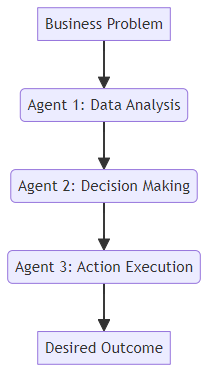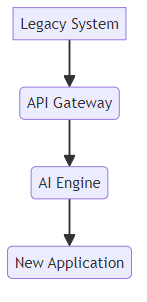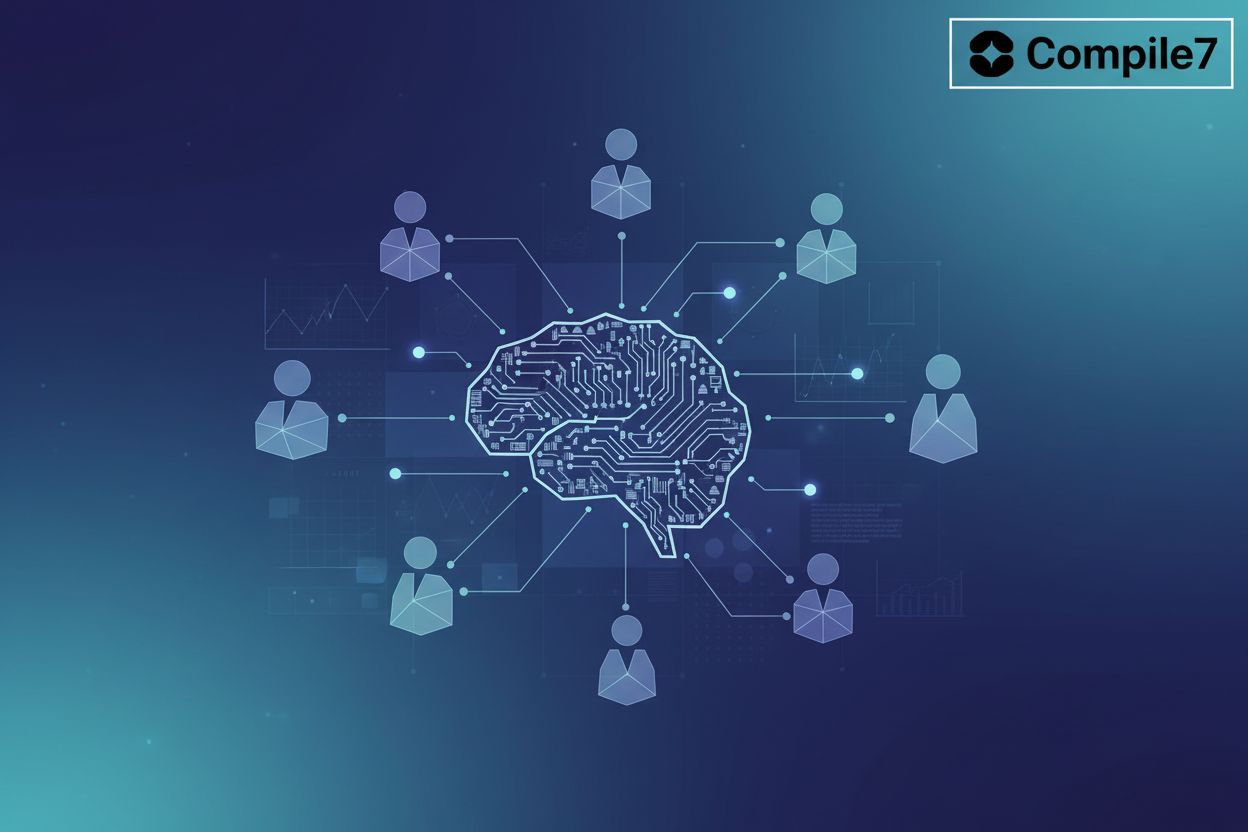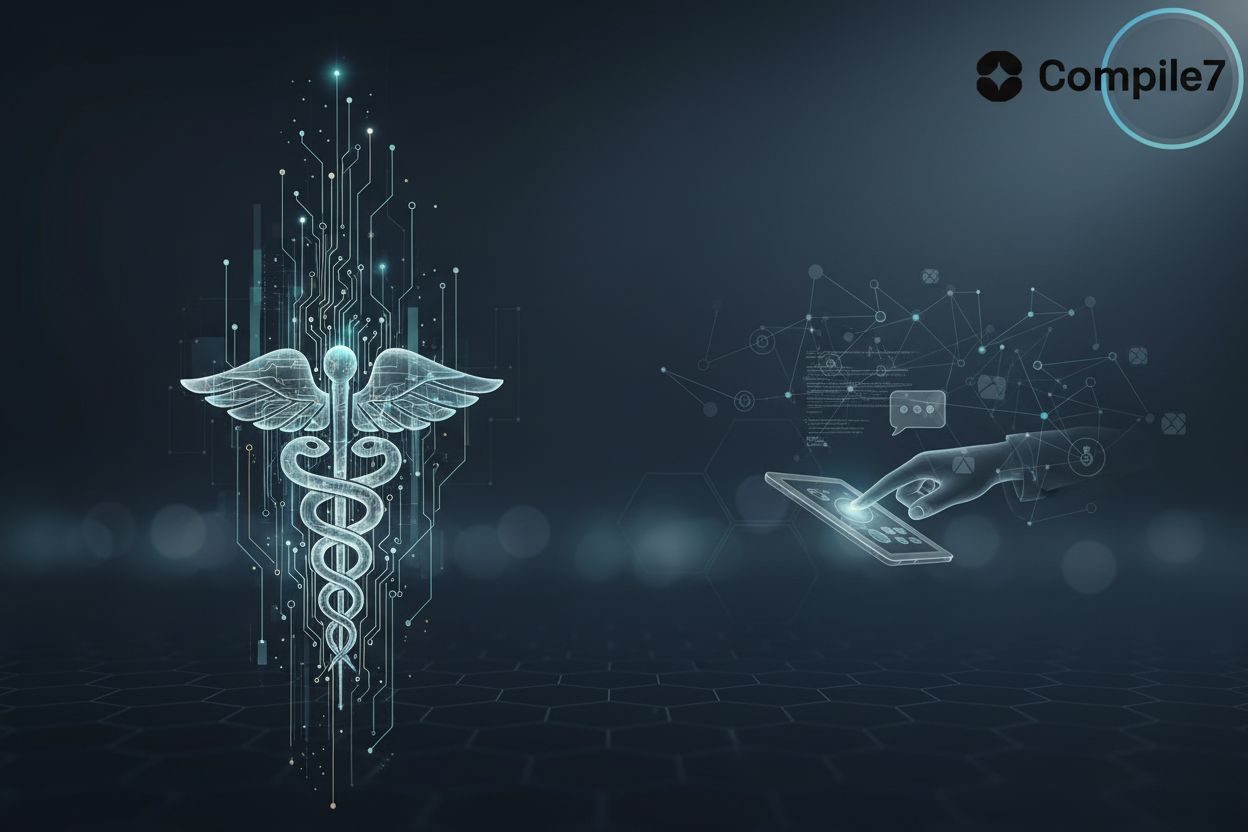AI-Driven Hyperautomation: The Next Evolution in Business Automation
Understanding Hyperautomation 2.0: The AI-Powered Revolution
Did you know that over 80% of organizations are already using some form of automation? Hyperautomation 2.0 is poised to revolutionize business with the help of ai agents.
Hyperautomation 2.0 is an evolution that uses ai to achieve end-to-end automation of complex processes. It combines Robotic Process Automation (RPA), ai (Machine Learning, Natural Language Processing, Computer Vision), process mining, and Intelligent Document Processing (IDP). The focus isn't just on automating tasks. It enables systems to learn, adapt, and dynamically optimize workflows.
Traditional RPA focuses on rule-based, repetitive tasks. It struggles with unstructured data and complex decision-making. Ai empowers automation to handle unstructured data and make real-time decisions. It continuously improves processes. SuperAGI notes that Agentic ai revolutionizes automation (Agentic AI is Revolutionizing the Future of Automation: Everest Report). It has the potential to reduce operational costs and improve customer satisfaction (Top Ways to Cut Operational Costs and Improve Customer Satisfaction).
Ai agents make decisions without human intervention. They learn and improve over time. Agentic ai is characterized by self-directed learning and adaptation to changing conditions. It can also tackle complex problems.
Agentic ai improves automation capabilities, enhances decision-making, and increases flexibility. It also creates better customer experiences.
As the world of automation evolves, it's important to look at the key components that make agentic ai a game-changer for end-to-end automation in enterprises.
Key Components of AI-Driven Hyperautomation
Did you know that ai can now make decisions on its own, without waiting for human input? Hyperautomation 2.0 is making this a reality, and it's changing how businesses operate.
At the core of ai-driven hyperautomation is the ability for systems to make autonomous decisions. This involves three key elements. First, reinforcement learning enables ai to learn from interactions and optimize decisions based on outcomes. For example, an ai agent managing inventory might learn that ordering more of a certain product during specific seasons leads to higher profits, and adjust its ordering strategy accordingly. Second, goal-oriented behavior ensures that ai agents pursue specific objectives aligned with organizational strategy. This means an agent tasked with customer service will prioritize resolving issues quickly and efficiently to meet customer satisfaction targets. Finally, self-improvement allows for continuous learning and adaptation to refine decision-making processes. An agent that initially struggles with complex customer queries will, over time, learn from its interactions and become more adept at handling them.
In practice, this means ai can handle tasks like lead qualification, customer service routing, and inventory management without human intervention. For instance, ai can analyze sales data to determine optimal inventory levels, minimizing stockouts and overstocking. According to KBV Research, the flexibility of ai-driven systems allows them to be trained for diverse tasks across different industries, improving operational efficiency and reducing manual intervention.
Another key component is the use of multi-agent systems, where multiple ai agents work together to solve complex problems. Agent orchestration coordinates and manages these agents to ensure seamless execution and optimal results. Think of it like a conductor leading an orchestra; agent orchestration ensures each ai agent plays its part at the right time and in harmony with others. For example, a sales team could use one agent for lead generation, another for email marketing, and a third for customer service, all working in sync.

The benefits include increased efficiency, productivity, and innovation through coordinated ai efforts.
Natural Language Processing (NLP) allows ai to understand the context, intent, and nuance in human communication. This leads to improved human-machine collaboration and enhanced process automation.
Nlp enables ai to analyze and comprehend human language, including tone, sentiment, and intent. This facilitates more effective communication between humans and machines, enabling agentic ai to better understand the needs and preferences of users.
With these components working together, ai-driven hyperautomation is set to transform business processes. As we move forward, it's important to consider how these components can be integrated into existing workflows.
Transforming Business Processes with AI-Driven Hyperautomation
Is your business ready to move beyond basic automation? Ai-driven hyperautomation can revolutionize your processes and unlock new levels of efficiency.
Ai-driven hyperautomation connects previously siloed automation efforts. This creates seamless workflows. It reduces manual errors and increases data accuracy through automated data capture and processing. Real-time monitoring and analytics provide instant feedback. It helps identify areas for improvement.
For example, in finance, ai can automate data extraction from invoices. Then, it triggers predefined approval workflows, significantly reducing manual processing time, as noted in Hyperautomation 2.0: How Business Analysis Can Lead the AI-Powered Process Automation Revolution
Ai-driven hyperautomation has diverse applications across various sectors:
- Finance: Automates fraud detection and credit scoring using machine learning. For instance, ai can analyze thousands of transactions in real-time to flag suspicious activity, preventing financial losses.
- Healthcare: Analyzes medical images for early disease detection and manages patient records with nlp. Imagine ai assisting radiologists by highlighting potential anomalies in X-rays, speeding up diagnosis and improving patient outcomes.
- Supply Chain: Predicts disruptions and optimizes logistics through ai-powered analytics. Ai can analyze weather patterns, traffic data, and supplier performance to anticipate delays and reroute shipments proactively.
- Manufacturing: Reduces equipment downtime by analyzing sensor data with machine learning algorithms. Ai can predict when a machine is likely to fail based on its operational data, allowing for preventative maintenance before a breakdown occurs.
Ai plays a crucial role in creating intelligent workflows that adapt and improve over time:
- Real-Time Decision-Making: Financial institutions deploy ai to detect fraud by analyzing transaction patterns in milliseconds. This means a fraudulent transaction can be stopped before it’s even fully processed.
- Predictive Analytics: Retailers use machine learning to forecast demand, optimizing inventory levels and cutting waste. This helps ensure that popular items are in stock and less popular ones don't take up valuable shelf space.
- Continuous Learning: Chatbots evolve through nlp, improving customer query resolution by learning from past interactions. The more a chatbot interacts with customers, the better it gets at understanding and answering their questions.
As Digile notes, ai transforms workflows from static to adaptive. It enables real-time decision-making, predictive analytics, and continuous learning.
Ai's ability to process unstructured data unlocks new possibilities. This includes analyzing customer feedback from surveys and social media to personalize marketing campaigns.
As we've seen, ai-driven hyperautomation offers significant benefits across various industries. Next, we'll explore how to implement these intelligent workflows in your own organization.
Implementation Strategies: Building a Successful Hyperautomation Framework
Is your company ready to take automation to the next level? A well-defined implementation strategy is key to unlocking the full potential of ai-driven hyperautomation.
To effectively oversee hyperautomation initiatives, organizations should establish a dedicated team. This Hyperautomation Center of Excellence (CoE) plays a key role in driving success. A CoE typically includes automation architects, ai specialists, business analysts, and it/operations teams. The team should possess business acumen, technical expertise, and an innovative mindset. The CoE's responsibilities often include defining automation standards and best practices, identifying and prioritizing automation opportunities, managing the automation pipeline, and ensuring the successful deployment and ongoing support of automation solutions. They also foster a culture of automation and continuous improvement across the organization.
Developing internal expertise requires ongoing training and education. Encourage cross-functional collaboration and foster a culture of innovation to achieve this. Partner with external experts to stay updated on the latest trends.
Integrating ai with existing systems is a critical step. A robust api strategy is crucial for seamless data exchange. Microservices architecture enables flexibility and scalability. Data integration ensures seamless data exchange between systems. Leverage data integration platforms to achieve this.

Successfully implementing hyperautomation requires more than just technology. It also requires effective change management. Clearly communicate the benefits of hyperautomation to employees. Provide comprehensive training to service teams. Offer ongoing support and resources to help employees adapt to new systems.
With the right implementation strategies, organizations can harness the full power of ai-driven hyperautomation. Next, we'll discuss the evolving landscape of ai and the future of hyperautomation.
Compile7: Custom AI Agent Solutions for Hyperautomation
Is your business struggling with repetitive tasks? At Compile7, we transform your operations with custom ai agent solutions designed for hyperautomation.
Custom AI Agent Development: At Compile7, we develop custom ai agents that automate tasks, enhance productivity, and transform how your business operates. We tailor each agent to fit your specific needs.
Tailored Solutions: Our ai agents are designed to meet specific business needs, ensuring seamless integration with existing systems and workflows. This approach maximizes efficiency and minimizes disruption.
Offerings: We provide Customer Service Agents, Data Analysis Agents, Content Creation Agents, Research Assistants, Process Automation Agents, and Industry-Specific Agents. Each agent is crafted to excel in its designated role, providing comprehensive support for your business processes.
Increased Efficiency: Automate repetitive tasks and streamline workflows with our custom ai agents. This reduces manual effort and speeds up operations.
Improved Productivity: Free up human employees to focus on higher-value activities. By offloading routine tasks to ai, your team can concentrate on strategic initiatives and innovation.
Enhanced Decision-Making: Leverage data-driven insights from our ai agents to make informed business decisions. Our agents analyze data quickly and accurately, providing you with actionable intelligence.
For example, a Data Analysis Agent can sift through large datasets to identify trends and patterns. Let's say a retail company uses a Data Analysis Agent to analyze sales data across different regions. The agent might discover that a particular product sells exceptionally well in coastal areas during summer months, prompting a targeted marketing campaign and optimized inventory allocation for those regions. A Customer Service Agent can handle routine inquiries, freeing up your support team for more complex issues. Imagine a customer asking about their order status; the Customer Service Agent can instantly access the order information and provide an update, rather than the customer waiting for a human agent.
- Consultation: Contact us for a consultation to discuss your automation needs and explore how our ai agents can help. We'll work with you to understand your challenges and identify opportunities for improvement.
- Custom Development: We work with you to develop custom ai agents that align with your business goals. Our development process is collaborative, ensuring that the final product meets your expectations.
- Implementation and Support: Our team provides comprehensive implementation and ongoing support to ensure your success. We're committed to helping you achieve your automation goals.
Ready to transform your business with custom ai agent solutions? Next, we'll explore the evolving landscape of ai and the future of hyperautomation.
Overcoming Challenges and Future Trends in Hyperautomation
Is your hyperautomation initiative stalling due to poor data or ethical concerns? Addressing these challenges and anticipating future trends is essential for realizing the full potential of ai-driven hyperautomation.
One of the most significant hurdles in hyperautomation is data quality. Poor data leads to inaccurate insights and flawed decision-making. To combat this, organizations must prioritize:
- Data Governance: Implement robust data governance practices to ensure data quality and accuracy. Establish clear policies for data collection, storage, and usage to maintain data integrity.
- Data Cleaning: Invest in data cleaning tools and processes to remove errors and inconsistencies. Regular data audits and cleansing routines are crucial for maintaining data accuracy.
- Data Validation: Establish data validation procedures to prevent the introduction of bad data into systems. Implement real-time data validation checks to catch errors before they enter the system.
As ai becomes more integrated into hyperautomation, ethical considerations become paramount. It's essential to ensure ai systems are used responsibly and ethically:
- Transparency: Ensure ai systems provide clear explanations for their decisions. Implement explainable ai (XAI) techniques to make ai decision-making more transparent and understandable.
- Bias Mitigation: Implement strategies to detect and mitigate bias in ai systems. Regularly audit ai models for bias and retrain them with diverse datasets.
- Human Oversight: Maintain human oversight to review and correct ai-driven decisions. Establish clear escalation paths for human intervention in critical decision-making processes.
The future of hyperautomation, or Hyperautomation 3.0, will be shaped by emerging technologies:
- Quantum Computing: Explore the potential of quantum computing to optimize complex workflows. Quantum algorithms can solve optimization problems much faster than classical algorithms, leading to more efficient automation.
- Advanced Robotics: Integrate robots to perform complex tasks with ease. Advanced robotics, combined with ai, can automate tasks that require dexterity and adaptability. For example, robots in warehouses can use ai to identify and pick items with greater speed and accuracy.
- Augmented Reality (AR): Use AR to provide real-time guidance and instruction to workers. AR can overlay digital information onto the real world, providing workers with step-by-step instructions and guidance. Think of a technician using AR glasses to see repair instructions superimposed on a piece of machinery.
Addressing data quality, ethical considerations, and embracing emerging technologies will drive hyperautomation forward. As ai continues to evolve, staying informed and proactive is key to success.
Next, we'll wrap up by summarizing the key takeaways and offering guidance on the path forward.
The Road Ahead: Embracing the Future of Automation
Imagine a world where ai anticipates your needs before you even voice them. That future is closer than you think, thanks to the ongoing evolution of hyperautomation.
Hyperautomation 3.0 is on the horizon, promising even greater levels of efficiency and innovation. To get ready, businesses should focus on:
- Research and Development: Staying up-to-date with the latest advancements in emerging technologies is paramount. Organizations should actively monitor developments in areas like quantum computing and augmented reality. This ensures they can leverage new tools as they become viable.
- Hyperautomation Roadmap: Creating a clear plan for implementing hyperautomation across the organization is essential. A well-defined roadmap outlines specific goals, timelines, and resource allocations. It also aligns automation efforts with overall business strategy.
- Team of Experts: As the hyperautomation landscape evolves, hiring professionals with expertise in emerging technologies is crucial. These experts guide implementation, optimize performance, and drive innovation, ensuring the organization stays competitive.
The integration of ai into workflows requires more than just technological upgrades; it demands a cultural shift. This shift includes:
- Collaboration: Fostering a culture of collaboration between ai and human workers is essential. When ai and humans work together, they can achieve more than either could alone. This synergy unlocks new levels of productivity and innovation.
- Upskilling: Investing in upskilling programs to transition workers into ai-augmented roles is critical. As ai takes over routine tasks, employees need new skills to manage and optimize automated systems. This ensures a smooth transition and maximizes the value of both human and ai contributions.
- Innovation: Encouraging experimentation and innovation in automation strategies is vital for continuous improvement. A culture of innovation allows organizations to identify new opportunities for automation. It also adapts quickly to changing market conditions.
The ultimate goal of hyperautomation is to unlock unprecedented agility and creativity. This involves:
- Synergy: Recognizing the potential of ai and humans to co-create value is crucial. By combining the strengths of both, organizations can develop innovative solutions. These solutions address complex challenges and create new opportunities.
- Leadership: Embracing the synergy between humans and ai to lead industries is essential for staying competitive. Leaders who understand and embrace ai can drive innovation and create a more agile and responsive organization.
- Adaptation: Evolving with cutting-edge tools to create tomorrow’s standard practices is key to long-term success. Organizations should be prepared to adapt their strategies and processes as new technologies emerge, ensuring they remain at the forefront of their industries.
Successful hyperautomation hinges on more than just technology. It requires a strategic vision, a commitment to ethical practices, and a willingness to embrace change. As ai continues to evolve, the organizations that prioritize these elements will be best positioned to thrive in the age of intelligent automation.





